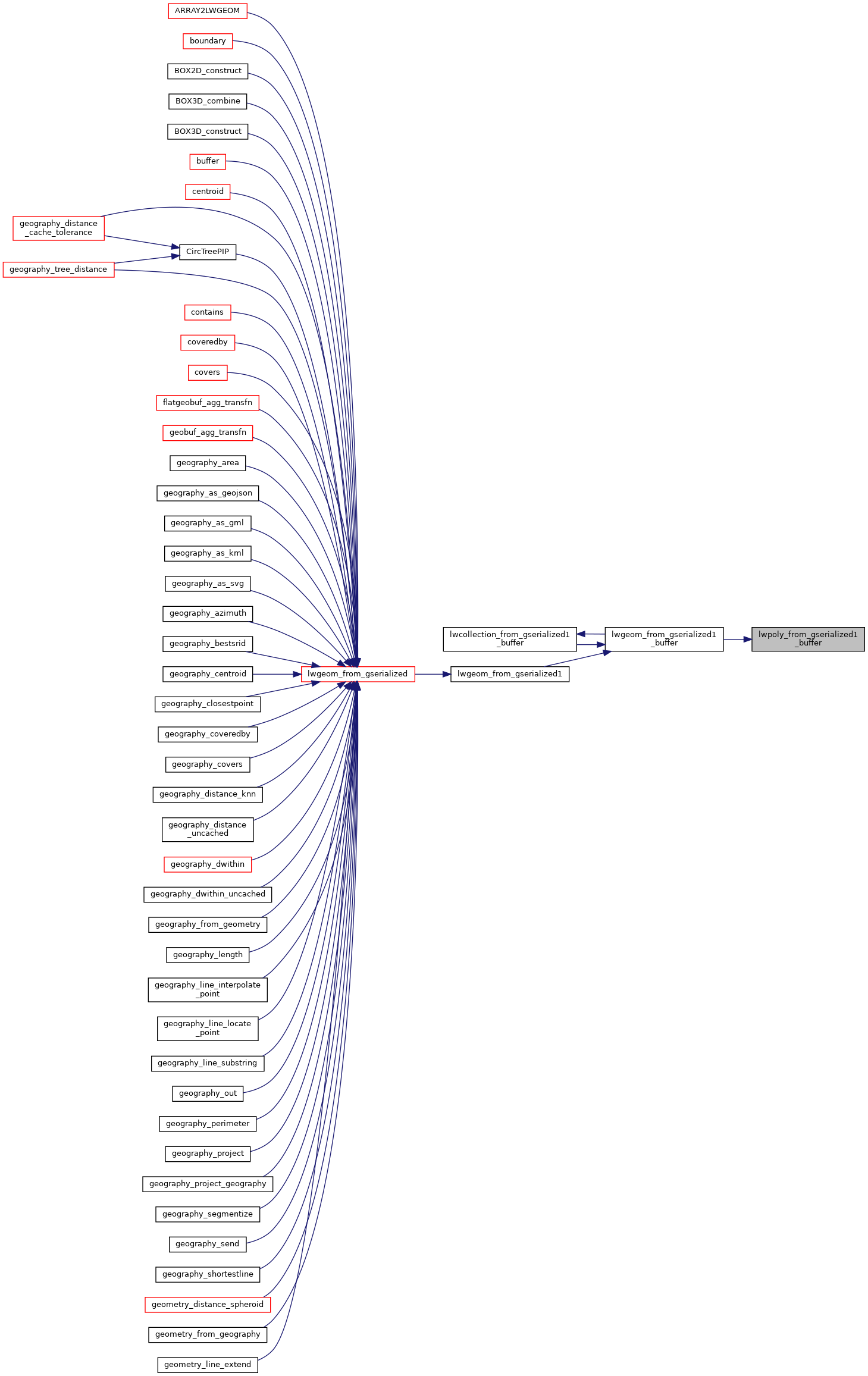◆ lwpoly_from_gserialized1_buffer()
|
static |
Definition at line 1227 of file gserialized1.c.
1273 poly->rings[i] = ptarray_construct_reference_data(FLAGS_GET_Z(lwflags), FLAGS_GET_M(lwflags), npoints, ordinate_ptr);
static uint32_t gserialized1_get_uint32_t(const uint8_t *loc)
Definition: gserialized1.c:74
POINTARRAY * ptarray_construct_reference_data(char hasz, char hasm, uint32_t npoints, uint8_t *ptlist)
Construct a new POINTARRAY, referencing to the data from ptlist.
Definition: ptarray.c:283
lwflags_t lwflags(int hasz, int hasm, int geodetic)
Construct a new flags bitmask.
Definition: lwutil.c:471
Definition: liblwgeom.h:517
Definition: liblwgeom.h:426
References LWPOLY::bbox, LWPOLY::flags, FLAGS_GET_M, FLAGS_GET_Z, FLAGS_NDIMS, gserialized1_get_uint32_t(), lwalloc(), LWDEBUGF, lwflags(), LWPOLY::maxrings, LWPOLY::nrings, POLYGONTYPE, ptarray_construct_reference_data(), LWPOLY::rings, LWPOLY::srid, SRID_UNKNOWN, and LWPOLY::type.
Referenced by lwgeom_from_gserialized1_buffer().
Here is the call graph for this function:

Here is the caller graph for this function:
